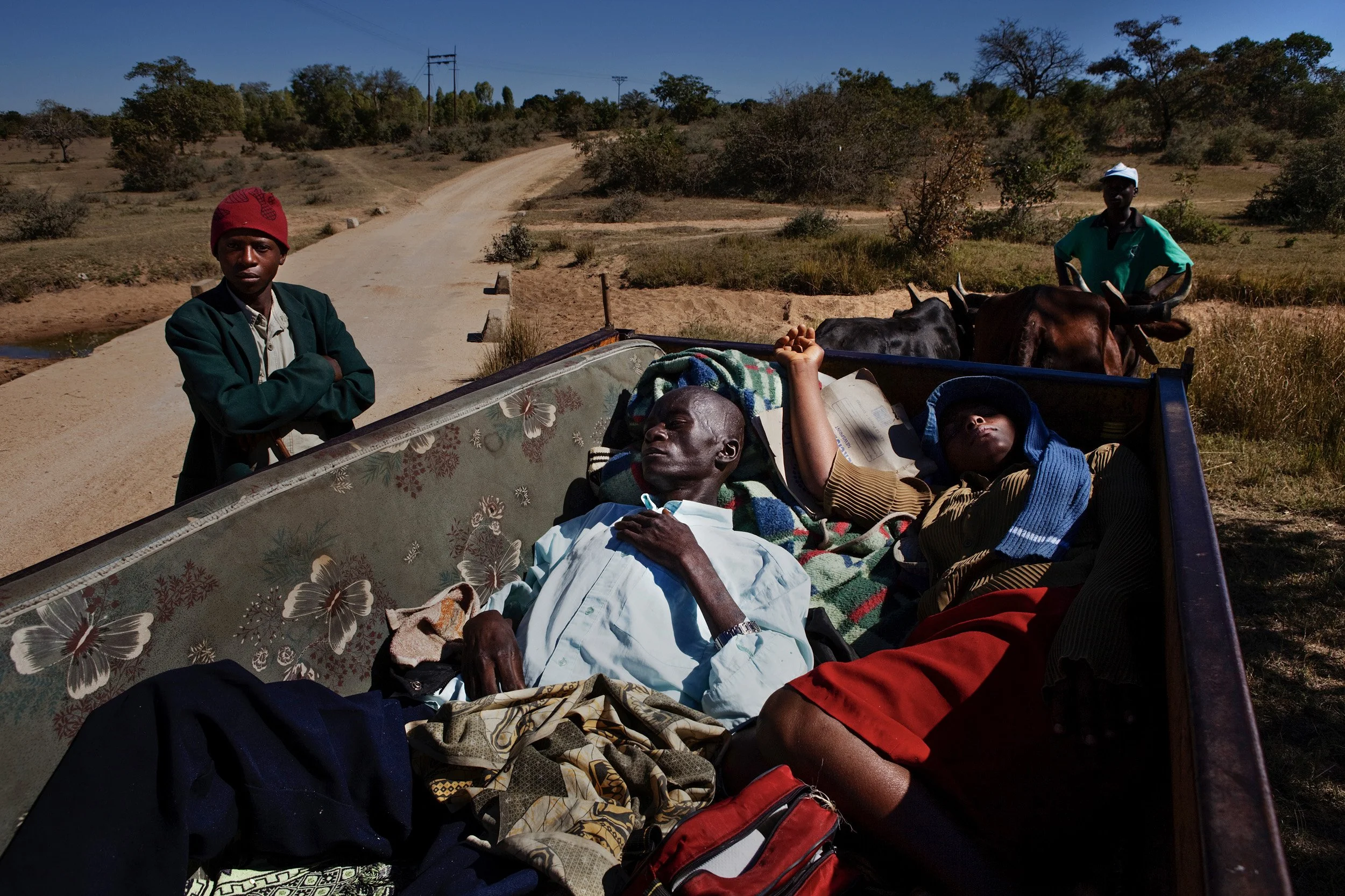
ZAKA, ZIMBABWE, 14 JUNE 2009: A man and women suffering from advanced Tuberculosis are taken to a clinic via ox-wagon in a rural area of Zaka, Zimbabwe, 24 June 2009. It is likely that both are HIV positive. Transport costs alone to and from the hospital are beyond the means of most Zimbaweans in this failed state. As a result of food scarcity in the failed state, malnutrition plays a large role in the rapid decline of HIV+ Zimbabweans. 25% of Zimbabweans are estimated to be HIV positive but there is only one ARV dispensing facility in the capital Harare. Its costs around $20 for the blood work to get on the program, a sum well beyond the reach of most in a country of over 90% unemployment.

ZAMBIA-ZIMBABWE BORDER: A dying Aids patient is bathed by her mother and aunt. The girl passed away shortly after this photograph. A lack of access to clean water accelrated the decline of her immune system combined with little access to nutrition in a time of drought in Zambia.

Nakondeo, Zambia A starving HIV+ farmer sits amongst the ruins of his failed crop, Nakondeo, Zambia. Improper agricultural practise, a lack of government subsidy and climate change have all contributed to an ongoing drought in Zambia. Those living with HIV have succumbed that much faster as a result.

SOWETO SOUTH AFRICA: An Hiv+ women on anti-retrovirals does her yoga routine in the garden of her home in Soweto township. Four months prior to this she was unable to walk and considered a final stage case. The access to medication has made her life possible again.
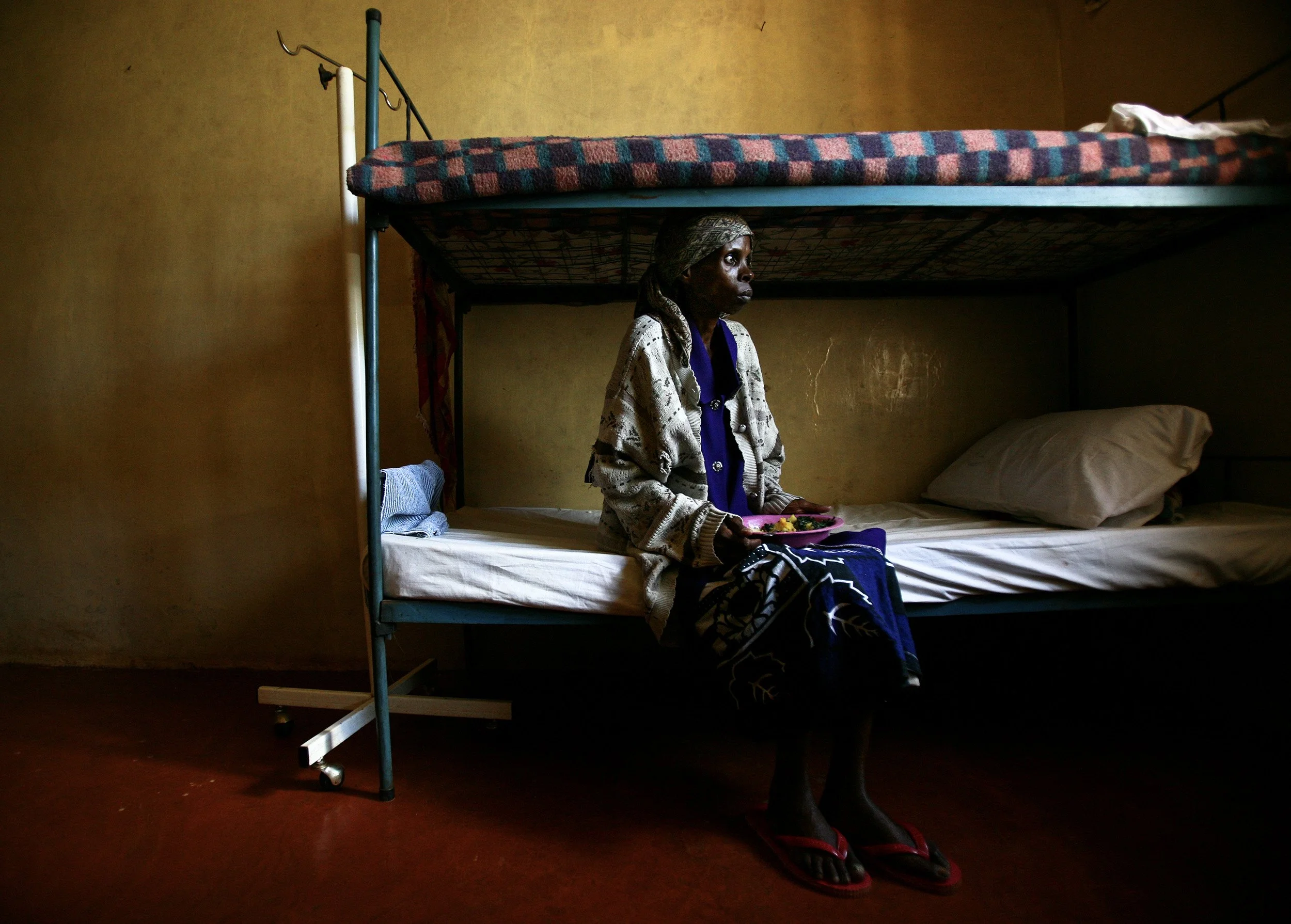
Meru, Kenya-28 November 2006: Elisabeth Mweru,28, feeding herself again for the first time in weeks as she recovers from severe tuberculosis. Elizabeth was found in an advanced stage of full blown Aids by a group of self-supporting HIV+ women in her village. She has been cared for by them to the point where she can now sit up and begin to feed herself. HIV rates in Kenya are now at 5 to 1 in terms of women to men, indicating a strong feminisation of the disease. As a result groups of Kenyan HIV+ women are banding together to offer each other education and support.
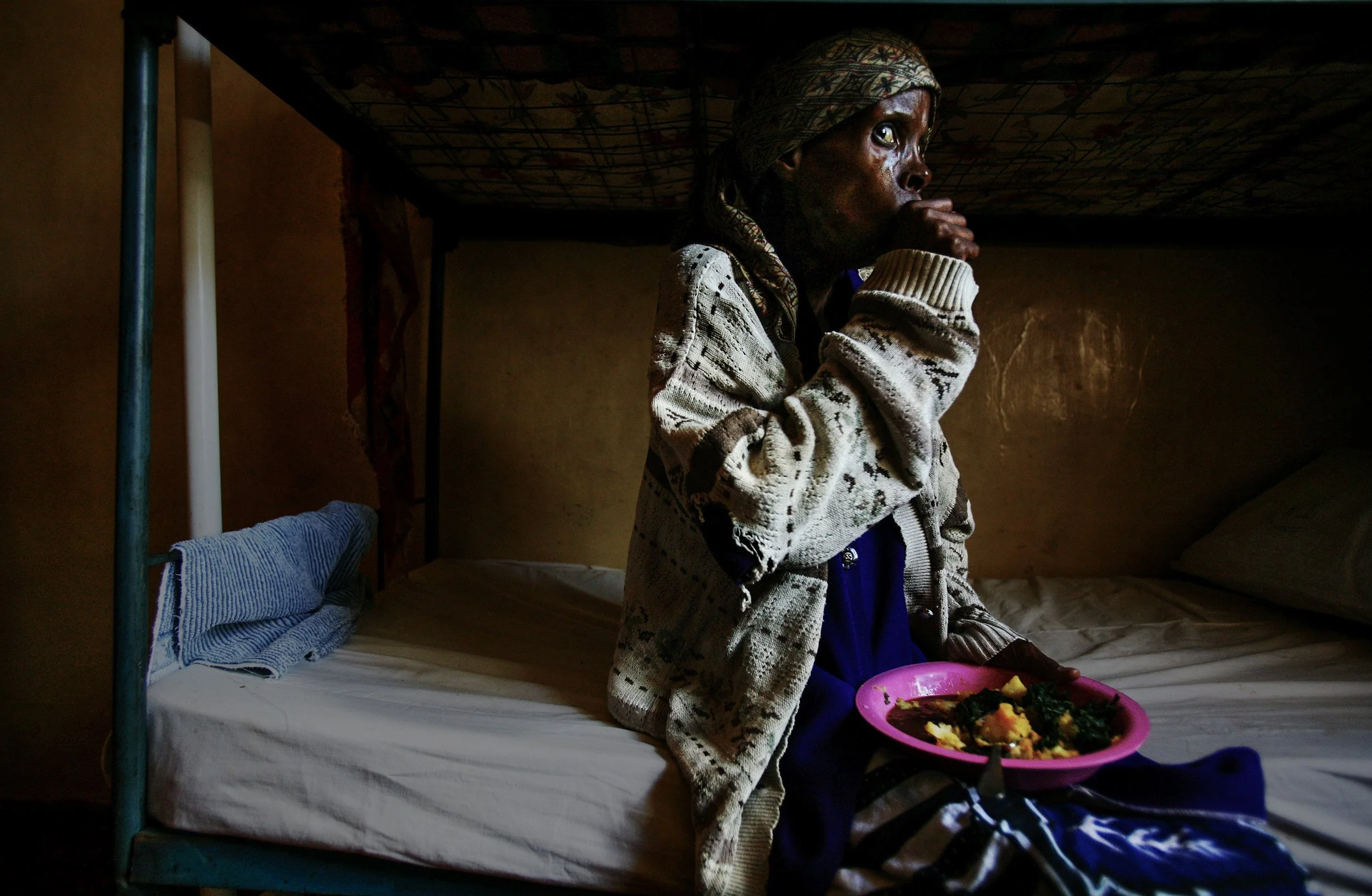
Meru, Kenya-28 November 2006: Elisabeth Mweru,28, coughs while feeding herself again for the first time in weeks as she recovers from severe tuberculosis. Elizabeth was found in an advanced stage of full blown Aids by a group of self-supporting HIV+ women in her village. She has been cared for by them to the point where she can now sit up and begin to feed herself. HIV rates in Kenya are now at 5 to 1 in terms of women to men, indicating a strong feminisation of the disease. As a result groups of Kenyan HIV+ women are banding together to offer each other education and support.

HARARE, ZIMBABWE, JUNE 2009: A severely ill HIV+ young woman alone in a one bedroom shack in a makeshift township in Harare, Zimbabwe, 21 June 2009. She says "My parents are dead, my brother and everyone I know is unemployed, I have nothing, that is why I am dying now." Zimbabwe has a reportedly 24% HIV positive population, one of the highest rates of infection in the world. The Zanu PF government has crippled the economy as well as interfered in Aid organisations coming into the country. There are no real Aids education campaigns, hospitals are extremely expensive and 85% of the population is unemployed. This has meant that healthcare is a distant dream for most Zimbabweans. A few institutions offer Anti-Retroviral treatments but it costs an average of $20 to get through the neccesary testing to get on the program. Transport costs alone to and from the hospital are beyond the means of most Zimbaweans in this failed state and food prices remain beyond the reach of most. Malnutrition thus contributes to the rapid decline of HIV+ Zimbabweans, even those fortunate enough to be on ARV treatment.

HARARE, ZIMBABWE, JUNE 2009: A severely ill HIV+ 16 year old girl is tended by her sister in a one bedroom shack in a makeshift township in Harare, Zimbabwe, 21 June 2009. They live with their grandmother as their parents died of Aids 5 years previously. They have no income and the grandmother relies on vending to try and bring in money. The recent collapse of the finacial system and the introduction of the US dollar and South African rand as the unit of currency has made it very difficult for casual vendors to obtain currency with which to trade. Zimbabwe has a reportedly 24% HIV positive population, one of the highest rates of infection in the world. The Zanu PF government has crippled the economy as well as interfered in Aid organisations coming into the country. There are no real Aids education campaigns, hospitals are extremely expensive and 85% of the population is unemployed. This has meant that healthcare is distant dream for most Zimbabweans. A few institutions offer Anti-Retroviral treatments but it costs an average of $20 to get through the neccesary testing to get on the program. Transport costs alone to and from the hospital are beyond the means of most Zimbaweans in this failed state and food prices remain beyond the reach of most. Malnutrition thus contributes to the rapid decline of HIV+ Zimbabweans, even those fortunate enough to be on ARV treatment.

HARARE, ZIMBABWE, JUNE 2009: A daughter looks on at her HIV+ mother lying desperately ill in a one bedroom shack in a makeshift township in Harare, Zimbabwe, 21 June 2009. Neither are employed or have any money and they were turned away from the hospital for lack of fees for admission. Zimbabwe has a reportedly 24% HIV positive population, one of the highest rates of infection in the world. The Zanu PF government has crippled the economy as well as interfered in Aid coming into the country. There are no real Aids education campaigns, hospitals are extremely expensive and 85% of the population is unemployed. This has meant that healthcare is distant dream for most Zimbabweans. A few institutions offer Anti-Retroviral treatments but it costs an average of $20 to get through the neccesary testing to get on the program. Transport costs alone to and from the hospital are beyond the means of most Zimbaweans in this failed state. As a result of scarcity food malnutrition plays a large role in the decline of HIV+ Zimbabweans, even those fortunate enough to be on ARV treatment.

Meru, Kenya-28 November 2006: Elisabeth Mweru,28, feeding herself again for the first time in weeks as she recovers from severe tuberculosis. Elizabeth was found in an advanced stage of full blown Aids by a group of self-supporting HIV+ women in her village. She has been cared for by them to the point where she can now sit up and begin to feed herself. HIV rates in Kenya are now at 5 to 1 in terms of women to men, indicating a strong feminisation of the disease. As a result groups of Kenyan HIV+ women are banding together to offer each other education and support.
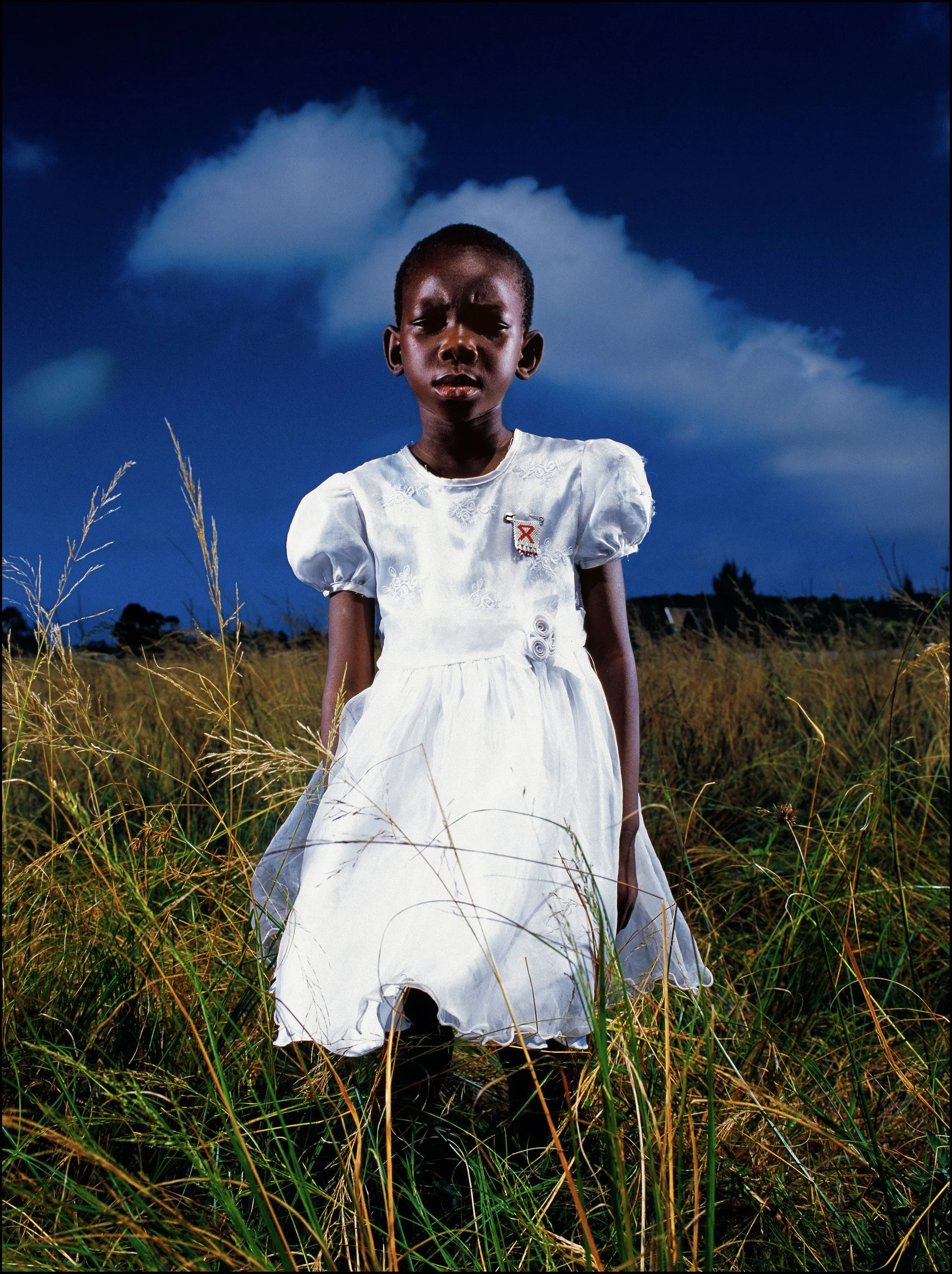
RICHARDS BAY, SOUTH AFRICA-MAY 2004: A young aids orphan stands alone in a field after a church service.

A man living with HIV is seen outside his home in rural Zambia

JOHANNESBURG, SOUTH AFRICA: An HIV/AIDS victim is buried in a paupers grave, South Johannesburg,.

Grandmothers looking after their grandchildren after the HIV + parents have died.
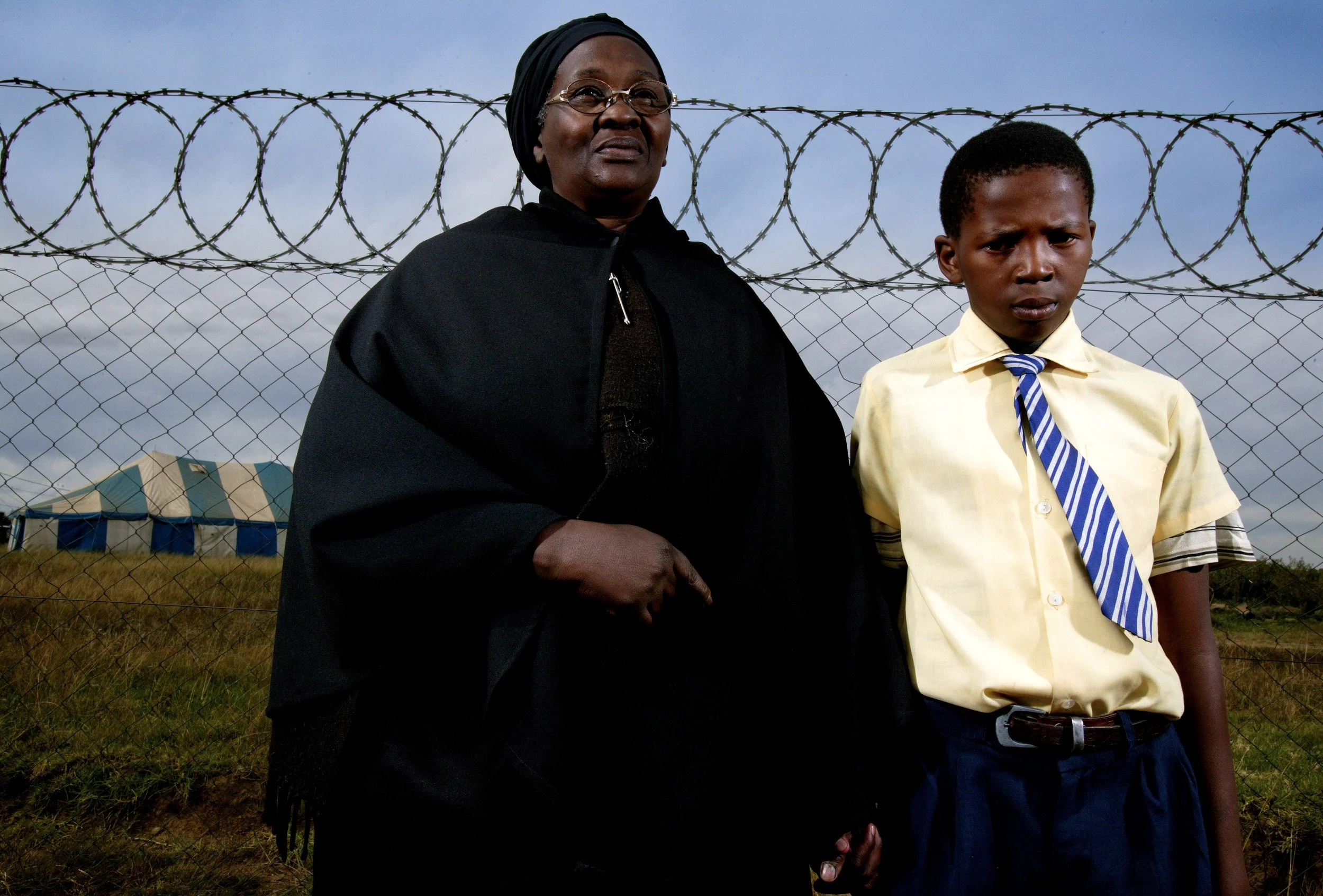
Grandmothers looking after their grandchildren after the HIV + parents have died.

Grandmothers looking after their grandchildren after the HIV + parents have died.

Grandmothers looking after their grandchildren after the HIV + parents have died.

A dying husband is seen with his wife and children

A Soweto, South African woman living with HIV is seen meditating in her home.
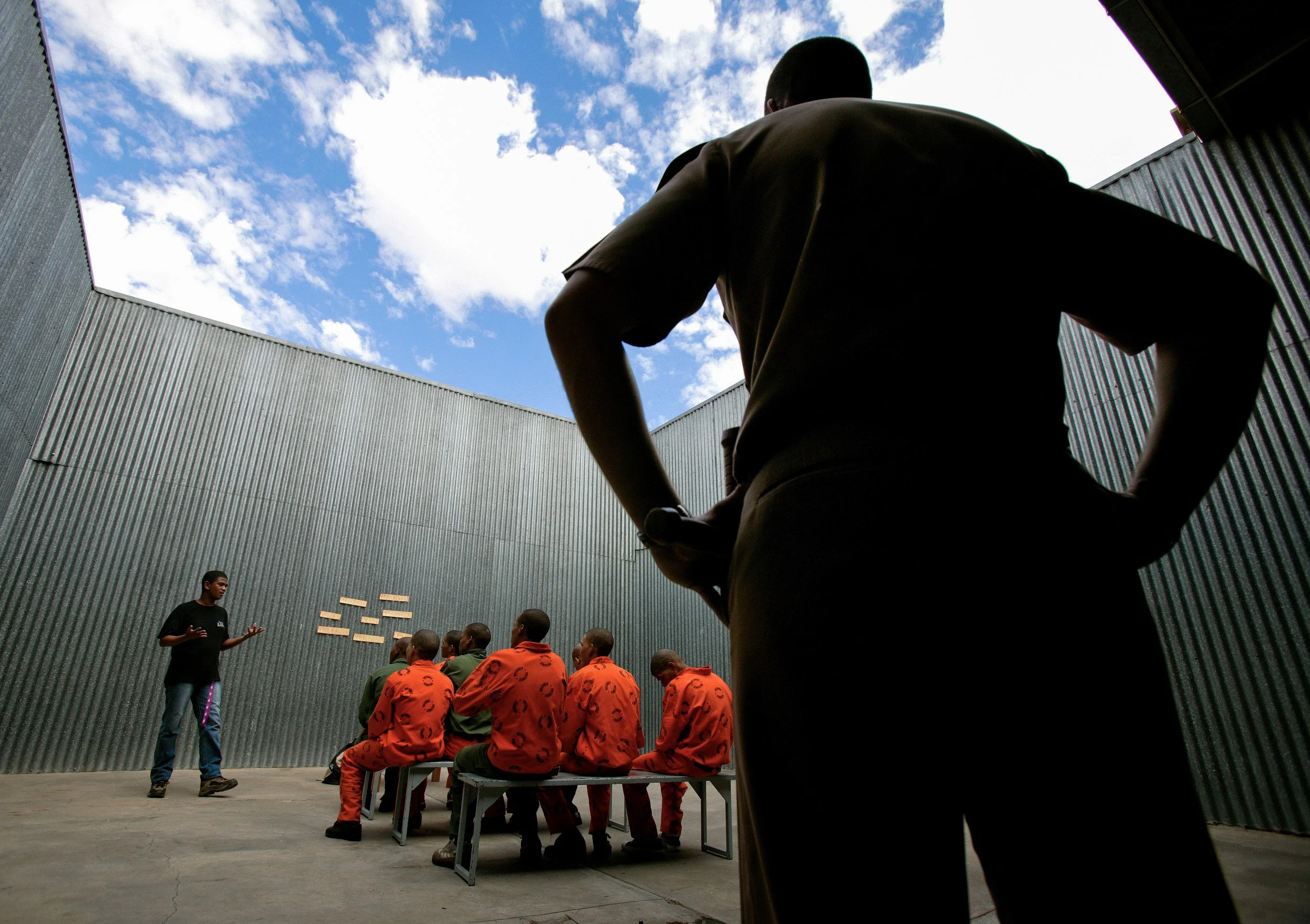
Aids education in Prison

An HIV + man receives oxygen in a De Beers Clinic.

A dance group rehearse, they use dance to bring HIV Aids awareness to Townships in South Africa
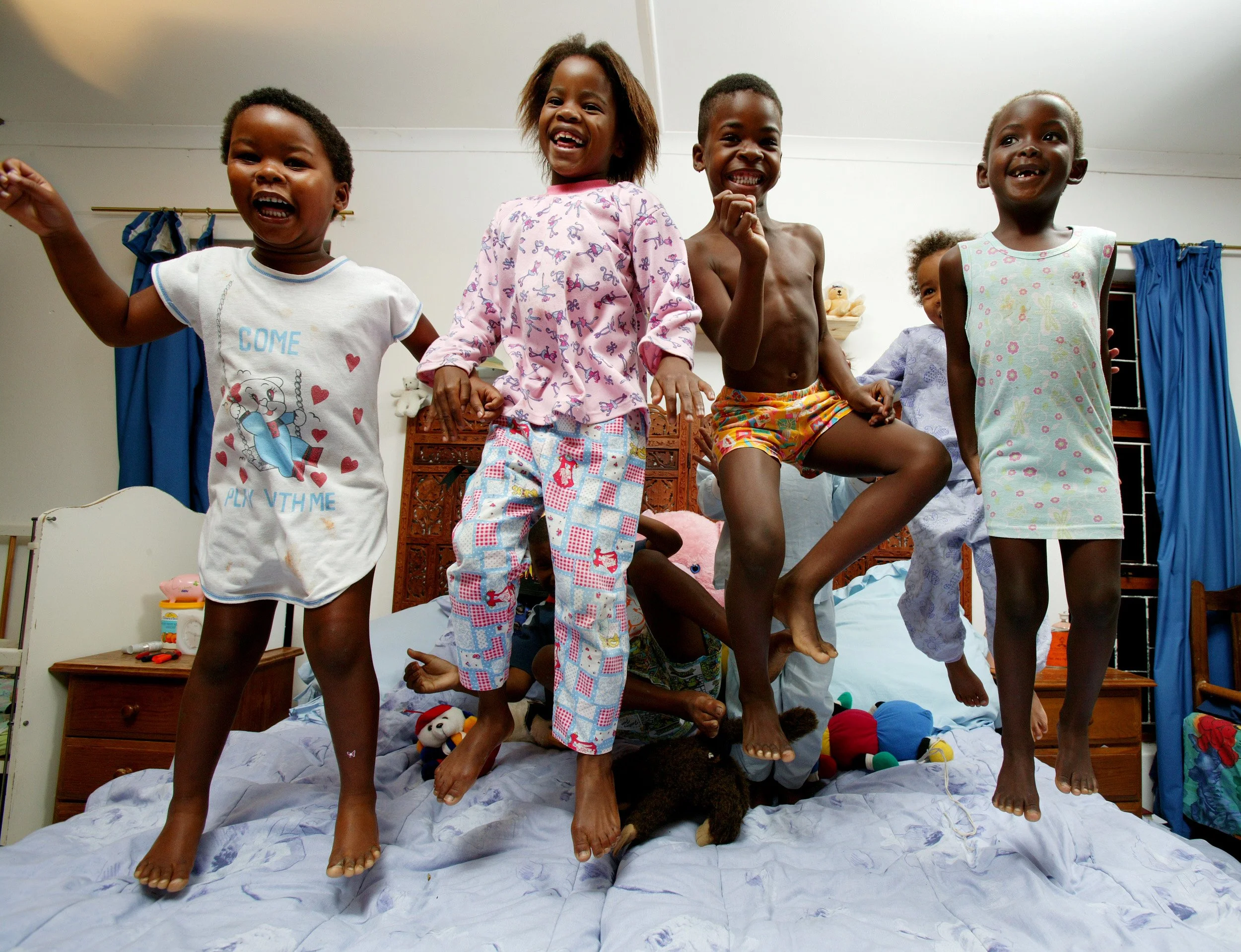
HIV+ aids orphans play in a care home in South Africa

New Delhi, India, June 2006: Michaels care home, run by Sahara, is a shelter for the HIV+ and for drug users. Many of Sahara's counsellors are former drug users and sex workers and understand the needs of the patients very well.
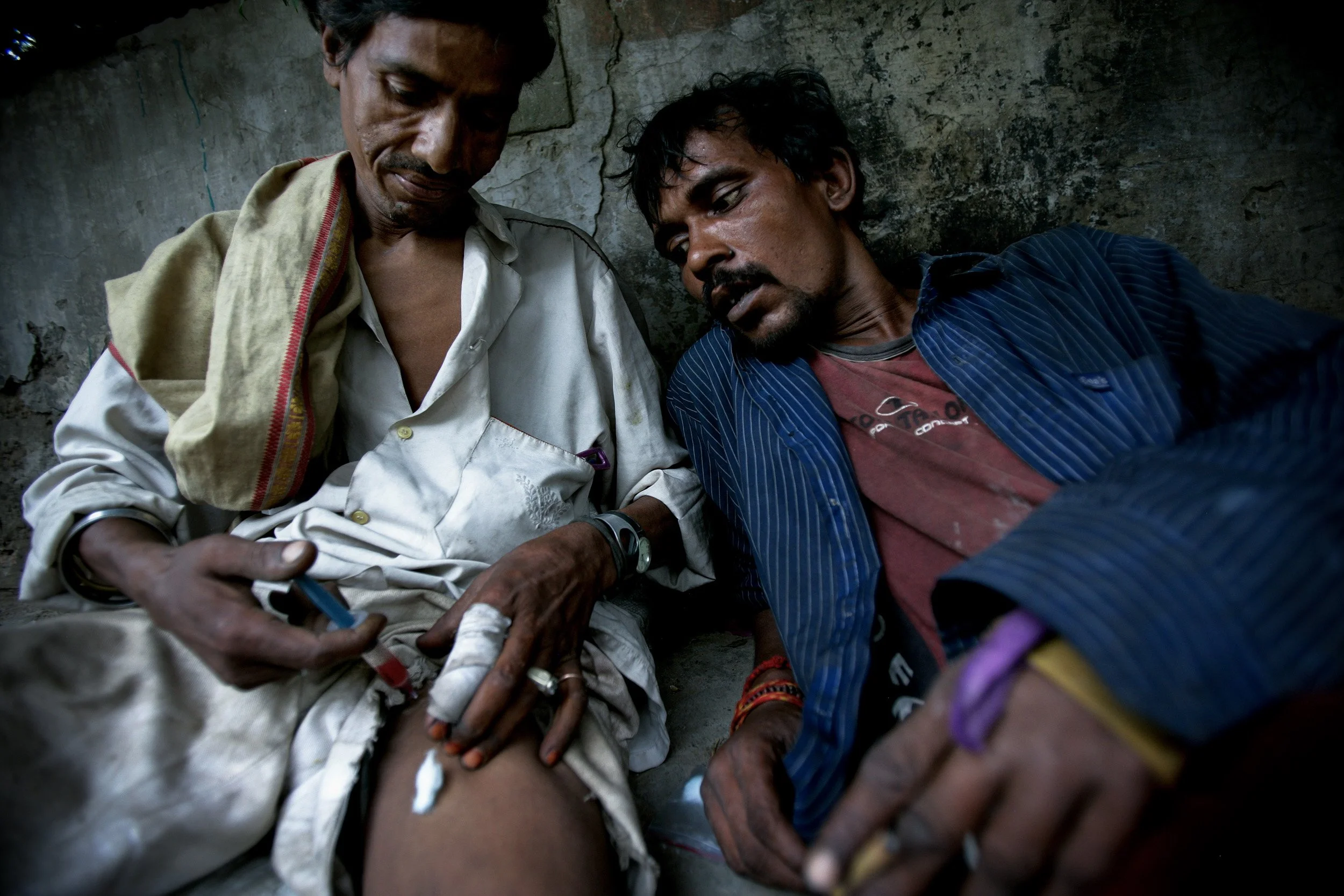
Delhi India, June 2006: Drug addicts use freely in the slum areas of Delhi. NGO Sahara attempts to work with these people and inform them of the risks they are taking.

New Delhi India, June 2006: Sahara shelter for women in Delhi, the women who are housed here get six months in which to put their lives back together. Most of the women are sex workers and drug addicts and come from a terrible history of sexual violence and battery. Many of the women are in hiding from pimps and husbands.

New Delhi, India June 2006: Modicare provides VCTC screening and counselling services at a hospital in Delhi for HIV + people and HIV affected patients.

New Delhi, India June 2006: Modicare trucker Aids education project. A team of facilitators meet with truckers and conduct safe sex and HIV awareness workshops. The work is done via folk media, condom parties, one to one counselling, and small group discussions.

Bombay, India July 2006: Commercial Sex Workers on Falkland road, a long standing red light district in Bombay.

New Delhi, India, June 2006: Trans-gendered sex-workers photographed at their home in a slum in Delhi. These men live as women and are all HIV+. They have all been using IV drugs and are now being taken care of by Sahara, an Indian NGO. These trans-gendered men are all the primary means of support for their families. In two cases here the men support a wife, a boyfriend, as well as three kids. With only their bodies as sexual collateral they form a very high risk group.
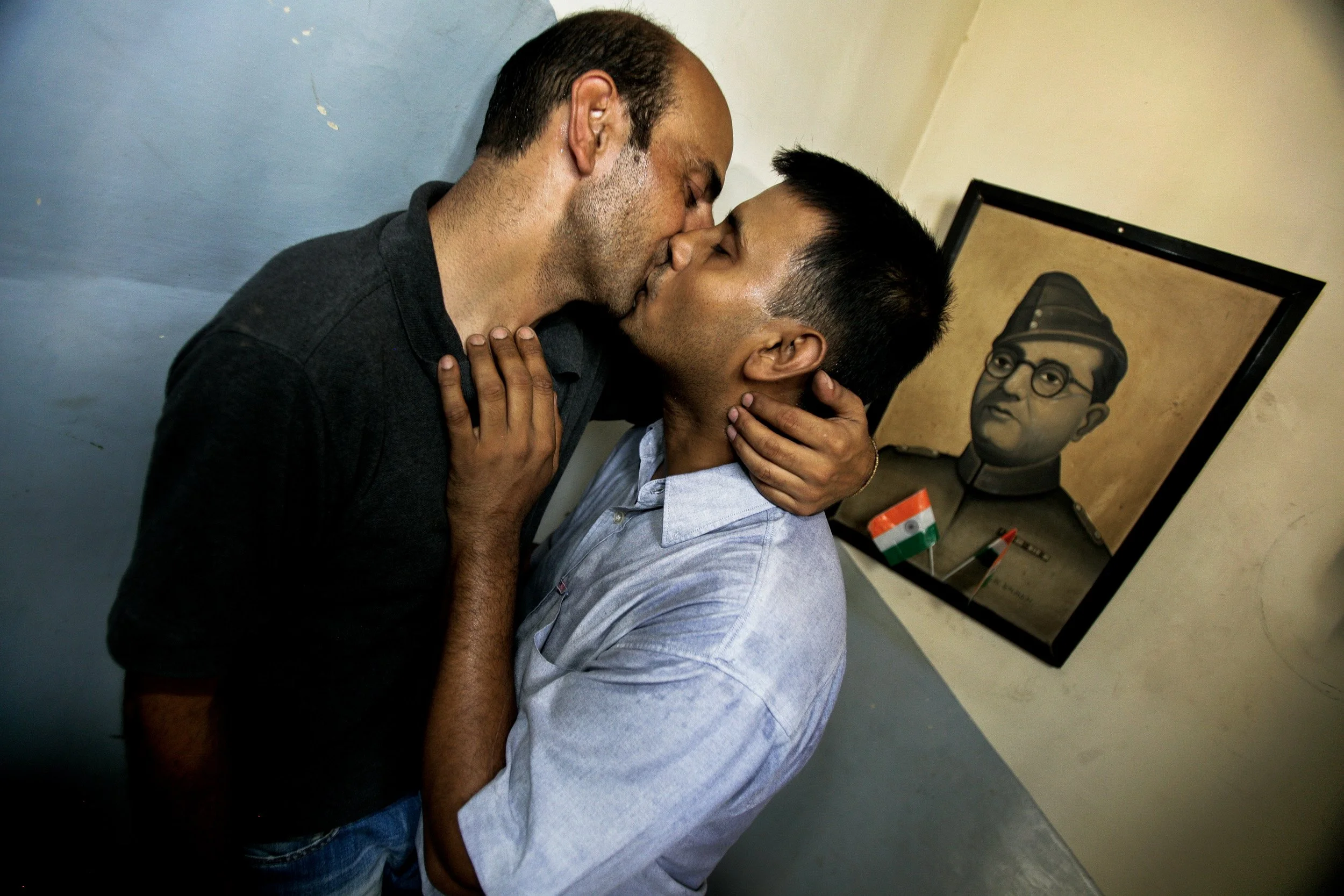
New Delhi, India, June 2006: A gay couple kiss in their home in Delhi. One man is a doctor, the other a businessman. Being gay in India is a very taboo issue and most gay men lead double lives as a result. Talking about HIV to gay men is doubly difficult as a result.

POLTAVA, UKRAINE - AUGUST 12 2005: Tanya, 29, is a sex-worker and drug user who is HIV+. She has an eleven year old son and lives with 5 other sex workers in a small apartment in a poor neighbourhood. She used to weigh 100 kilograms but has wasted away to nothing. She has severe septicemia on her legs and a rampant addiction. Tanya tells that sometimes in the past wealthy men would seek her out for sex as part of a bizarre "Russian roulette with Aids" scenario, where they would have unprotected sex and dice with the odds of contracting HIV.

POLTAVA, UKRAINE - AUGUST 12 2005: Tanya, 29, is a sex-worker and drug user who is HIV+. She has is pictured with her eleven year old son Vitali. He does not go to school and spends his days playing computer games and dreaming about Africa where he says he will enjoy doing nothing. When asked if he knows his mother is an addict he say "Yes but I don't want to talk about that." They live with 5 other sex workers in a small apartment in a poor neighbourhood. Tanya used to weigh 100 kilograms but has wasted away to nothing. She has severe septicemia on her legs and a rampant addiction. Tanya tells that sometimes in the past wealthy men would seek her out for sex as part of a bizarre "Russian roulette with Aids" scenario, where they would have unprotected sex and dice with the odds of contracting HIV.

DONETSK, UKRAINE - AUGUST 16 2005: Sacha, 33, was a drug addict for 12 years before he found relegion. He believes that God found him and saved him from himself. He continues to deal drugs but he now collects needles for needle exchange programmes in Donetsk. He gives those clean needles out to the addicts who frequent his house, a perfect fromula for needle exchange. When he was using drugs he almost destroyed the home he is sitting in. Now he is trying to rebuild it.

ODESSA, UKRAINE - AUGUST 21 2005: A group of streetkids sleeping in a damp, filthy underground cellar in Odessa. All of the 6 kids in the cellar are HIV+ and many have signs of advanced Tuberculosis. When they were told of their HIV+ status the kids reportedly said, "Kill us, give us an injection and let us die now." Local NGO "The Way Home" tries to visit these kids on a regular basis and takes them food, condoms and clean needles. It is estimated that there are over 5000 of these streetkids in Odessa. They speak no common moral language as a result of their experiences on the street and form their own criminal underclass in Ukraine. They are often used by older criminals as thieves as they are difficult to prosecute as minors. The girls are often forced to act as prostitutes and are extremely vulneralbe to rape, pregnancy at a young age and sexually transmitted disease. The fact that many of them are HIV+ and drug users only adds to their desperation and fearlessness. Neglecting the streetkid/HIV issue means a growing future problem for authorities in Ukraine.

ODESSA, UKRAINE - AUGUST 21 2005: 2 streetkids shoot up in a filthy squat in a wrecked, unsafe house in Odessa. They are using a needle and syringe that were lying on the floor of the squat. Both boys are HIV+. All 6 of the boys who live in the squat are HIV+ and drug users, according to tests conducted by a local NGO.The average age of the boys is 14. Local NGO "The Way Home" tries to visit these kids on a regular basis and takes them food, condoms and clean needles. It is estimated that there are over 5000 of these kids in Odessa. They speak no common moral language as a result of their experiences on the street and form their own criminal underclass in Ukraine. They are often used by older criminals as thieves as they are difficult to prosecute as minors. The girls are often forced to act as prostitutes and are extremely vulneralbe to rape, pregnancy at a young age and sexually transmitted disease. The fact that many of them are HIV+ and drug users only adds to their desperation and fearlessness. Neglecting the streetkid/HIV issue means a growing future problem for authorities in Ukraine.
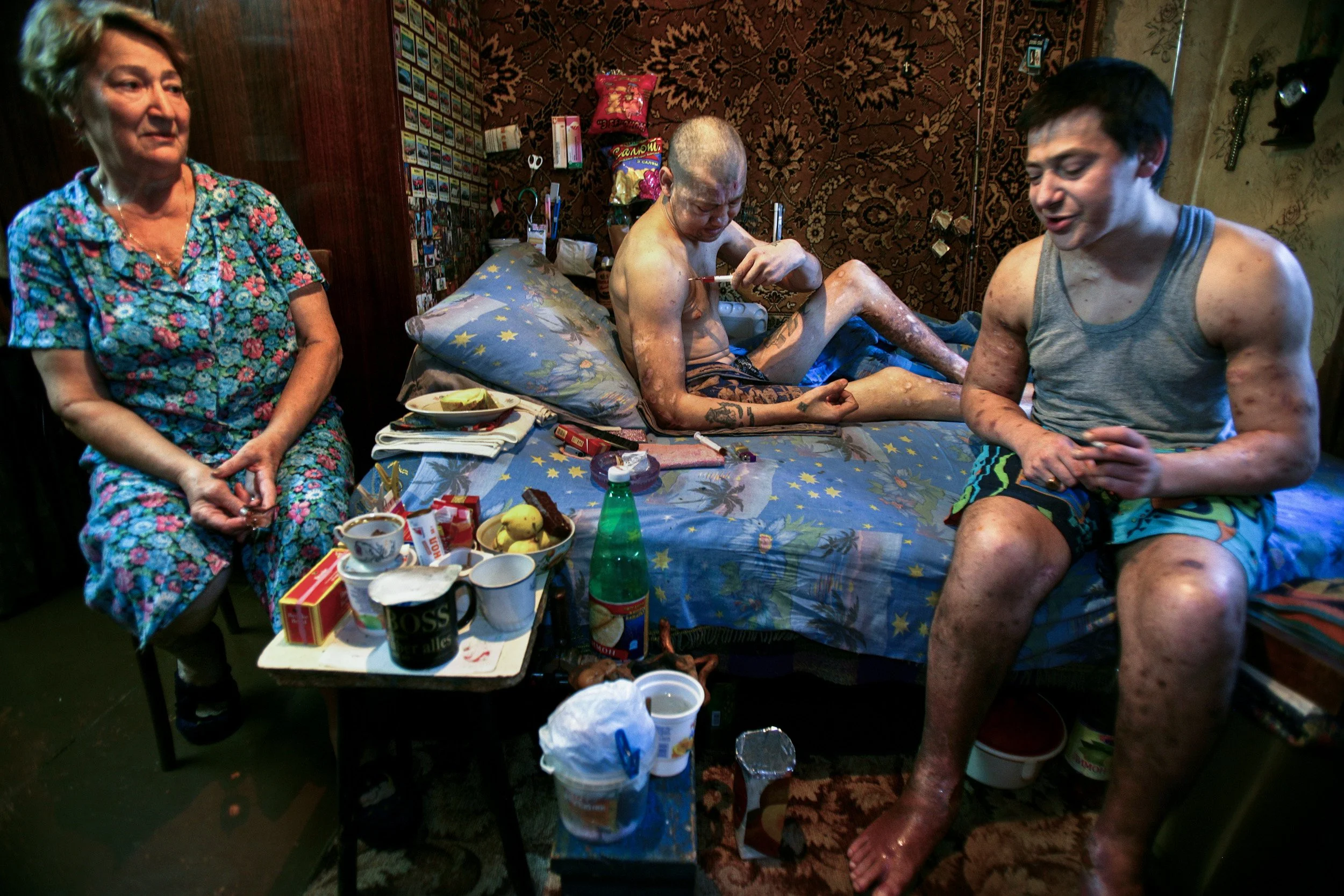
POLTAVA, UKRAINE - AUGUST 12 2005: In a small apartment in a poor neighbourhood of Poltava, two brothers shoot up drugs while their mother looks on helpless in her own home. Alla, left, is the mother of Dima, 39, middle, and Ruslan, 36, right. They have been addicts for over 20 years and in that time both sons have had daughters. Alla lost her husband 15 years ago and had to quit her job as a kindergarten teacher to look after her addict sons. Ruslan, the younger son, often berates her for being a bad mother as a means of controlling her and ensuring that she will continue to look after him and his brother. It is rumoured in the neighbourhood that the family deals in drugs so as the two brothers can maintain their addiction.

POLTAVA, UKRAINE - AUGUST 12 2005: In a small apartment in a poor neighbourhood of Poltava, Alla, the mother of two addicted sons, holds a portait of herself with her sons before they become addicts more than 20 years ago. Alla lost her husband 15 years ago and had to quit her job as a kindergarten teacher to look after her addict sons. Ruslan, the younger son, often berates her for being a bad mother as a means of controlling her and ensuring that she will continue to look after him and his brother. It is rumoured in the neighbourhood that the family deals in drugs so as the two brothers can maintain their addiction.

POLTAVA, UKRAINE - AUGUST 12 2005: A roadside sex worker who is a drug addict services a client in scrub just off the main road leading in and out of Poltava. These girls see between one and five clients a night, for an average of $8 a time. Many of these girls move from town to town across the country with truckers, spreading the HIV virus as they go.
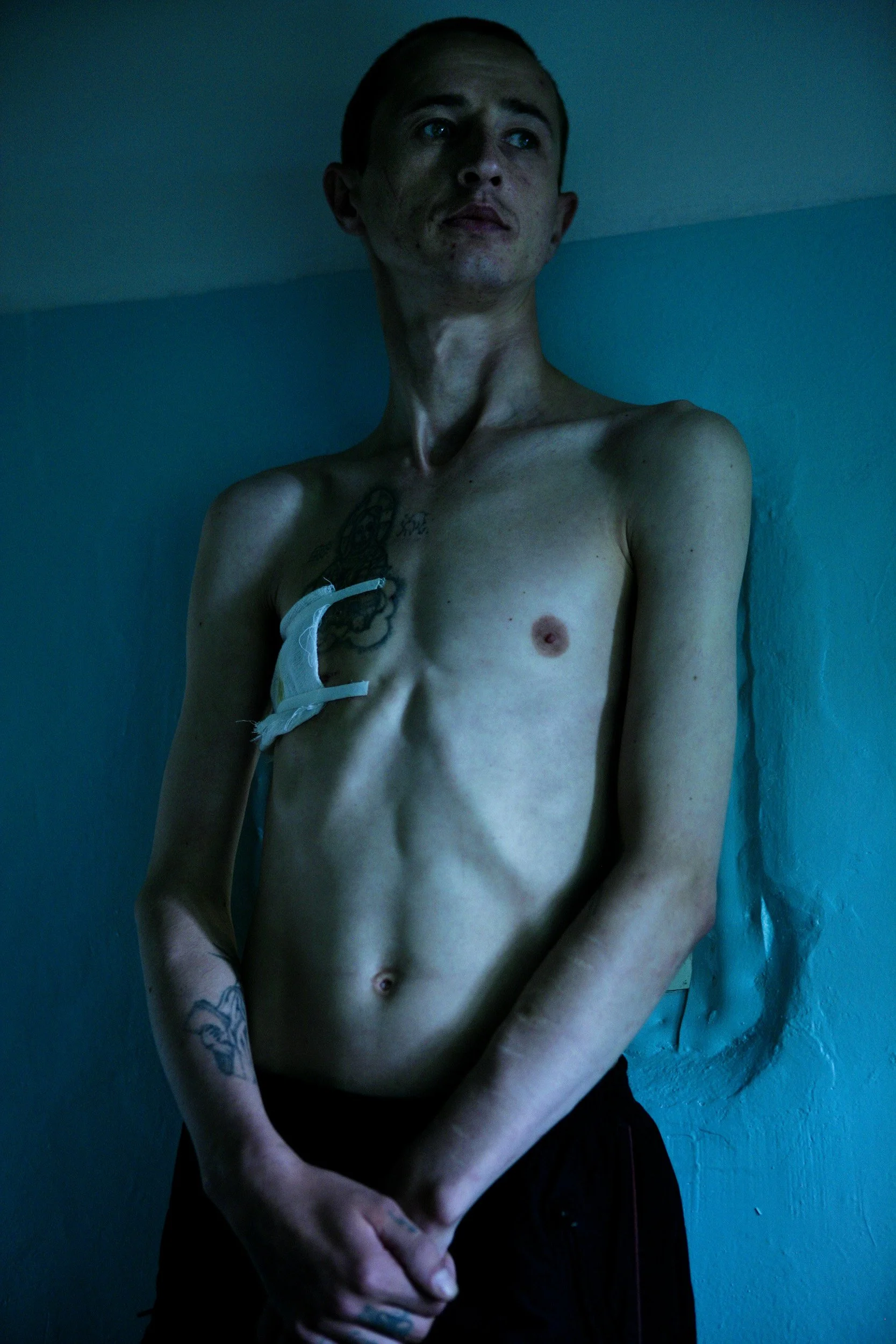
POLTAVA, UKRAINE - AUGUST 15 2005: Andrey, 28, waits to be X-rayed at the local TB hospital. He is HIV+ and has advanced TB. They are often linked in Ukraine. Andrey received a five year prison sentence for drug possesion but his parents were able to pay a $300 bribe to officials and have him sent to the hospital instead. It is likely that he will be jailed again.

DONETSK, UKRAINE - AUGUST 16 2005: Tatjana, 42, is a former drug addict who started taking drugs at age 32. She became HIV+ in 1996 and quit. She has two children, a daughter of 23 and son of 16. She has been on anti retro virals for a year but they are having an adverse effect on her. She cannot walk properly, hear properly and feels the whole time that something inside her is pushing her, driving her, so she spend most of her time walking around her tiny apartment. She cannot talk properly and cries constantly. Tatjana's mother Olga, 72, takes care of her and her 16 year old son. This is something she does more out of a sense of duty than love and that weighs heavily on Tatjana and makes for a loveless atmosphere in the apartment. Tatjana's mother also stated, "They should shoot all drug users. I don't understand why the government should spend money on them." thus illustrating her lack of understanding of the far reaching implications of HIV for families and communities. This lack of understanding is commonplace in Ukraine and is the norm. HIV + people are often treated as criminals rather than victims.

KIEV, UKRAINE - AUGUST 22 2005: Natacha, 28, is the mother of 3 children. She is seen in hospital with her youngest, a baby girl of 2 months. Natacha's husband died an Aids related death two days before this picture. She is HIV+ and currently severly ill in hospital. Her husband was an intermittent drug user, she claims to have never used IV drugs. Natacha contracted the disease from her husband. So far two of her children have tested negative and she is hoping it will be the same for the latest child. Natacha is currently looking for a night job which will allow her to support her children and look after them during the day.
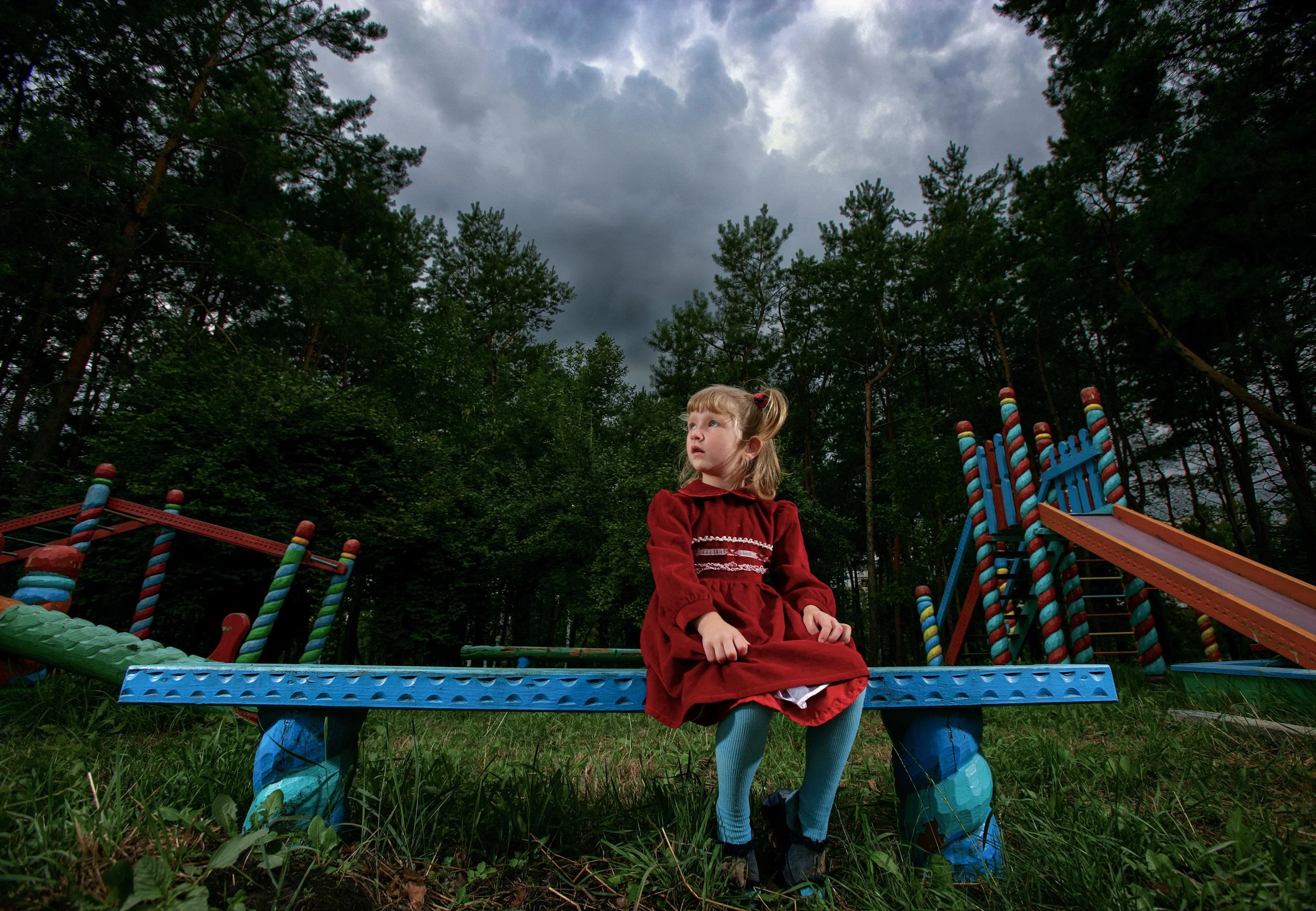
IEV, UKRAINE - AUGUST 12 2005: Nadia is a 6 year old Aids orphan at the Kiev Orphanage Berezka. She has been living with full blown Aids for some years now and is on Anti Retro Viral treatment made possible by the Global funds involvement in the orphanage. Nadia is significantly older than the other 20 HIV+ abandoned children at the orphanage and it is looking increasingly unlikely she will be adopted. In spite of this she is a bright and independant child who is very loving to all visitors. The orphanage is home for abandoned children from age zero to 4 years.

KHERSON, UKRAINE - AUGUST 18 2005: Prisoners with full blown Aids lie in their intensive care ward at Kherson Prison Hospital for prisoners with HIV/Aids. Kherson Prison is the only Prison in Ukraine where HIV + prisoners are treated. There are no programmes in place for funding for Anti Retro Viral treatments for prisoners. The prisoners know they are dieing and that treatment is not available to them. The prison hospital has recently used small government funding to attempt to modernise but cannot go further due to lack of funds. No testing equipment is available and all tests have to go to Odessa for results. In the last year the number of HIV + prisoners passing through this hospital has tripled. For most prisoners ignorance adds to the stigma of Aids and it is difficult to gain a true idea of HIV statistics behind bars in Ukraine.
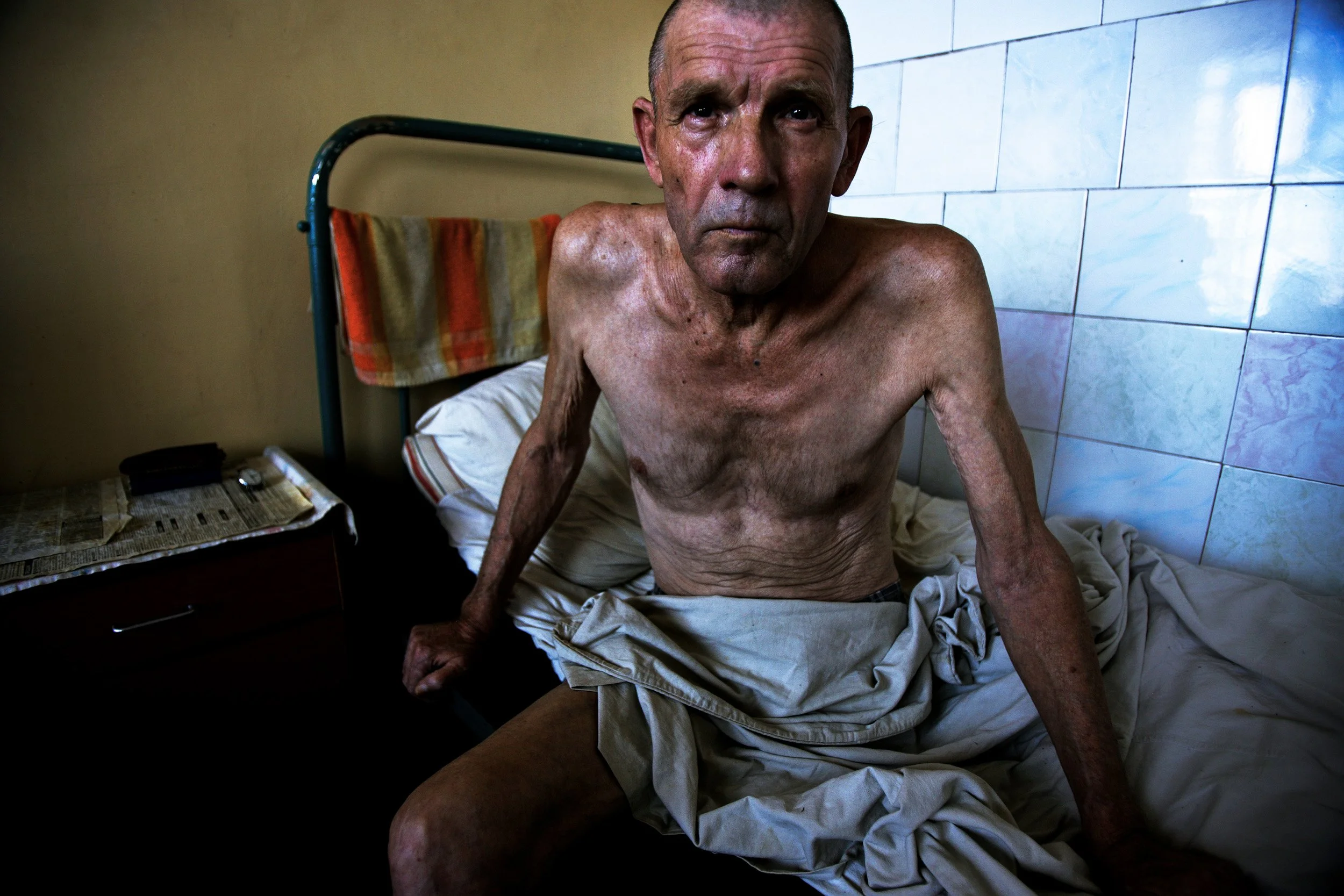
KHERSON, UKRAINE - AUGUST 18 2005: A prisoner with full blown Aids lies in an intensive care ward at Kherson Prison Hospital for prisoners with HIV/Aids. Kherson Prison is the only Prison in Ukraine where HIV + prisoners are treated. There are no programmes in place for funding for Anti Retro Viral treatments for prisoners. The prisoners know they are dieing and that treatment is not available to them. The prison hospital has recently used small government funding to attempt to modernise but cannot go further due to lack of funds. No testing equipment is available and all tests have to go to Odessa for results. In the last year the number of HIV + prisoners passing through this hospital has tripled. For most prisoners ignorance adds to the stigma of Aids and it is difficult to gain a true idea of HIV statistics behind bars in Ukraine.

POLTAVA, UKRAINE - AUGUST 15 2005: A patient sits alone in his room in the Aids wing of Poltava Psychiatric Hospital. There is no facility for HIV+ people at any hospital in Poltava. If they require treatment they are forced to come and live in the Psychiatric hospital. The man depicted has been living there for 3 years and has no friends and only a cat for company.

KIEV, UKRAINE - AUGUST 12 2005: Dimitri, 25, is an HIV+ IV drug user who has used drugs since he was 16. He is currently under treatment for chronic addiction and related helath issues in Kiev Aids Centre hospital number Five, the best facility for Aids patients in Ukraine. The hospital has some of the latest equipment but has enormous recruiting problems for qualified doctors. Low salaries and a fear of Aids amongst health professionals mean that these facilities are currently under-utilised. The salary of the top doctor at the facility is $200 a month, a sum she considers well paid by local standards. Many young people who qualify as doctors in the Ukraine seek other employment as a result of the low salary scale offered by government medical facilities.

CHENG DU, CHINA NOVEMBER 25 2004: A young under-age prostitute in a brothel on the outskirts of Cheng Du. Her face is covered as she is too afraid of repercussions to be photographed with her face showing. Many of these young girls are lured to the cities by the prospect of a better economic future. She cannot read or write and thus has limited opportunities other than prostitution. Many of these girls see between five to eight clients a day. Chinese men are also known to pay more for sex without a condom. As a result of all these factors and without adequate programmes on the ground to educate them, these girls are prime candidates for HIV infection.

BEIJING, CHINA-NOVEMBER 18 2005: Two gay men make out in a bathroom in Beijing. The man with his head turned away works as a male prostitute. He is from a rural area and has no education. He cannot even sign his name. As a result he works as a prostitute but cannot read any literature warning him of the dangers of his profession. Until as recently as 2001, being a homosexual in China was often treated as a psychological illness and resulted in persecution, stigmatisation and even imprisonment.. As a result of public stigma, very few men are openly gay in China. This has resulted in less openess about HIV and less sharing of information about the disease. This has left China's gay male population more at risk to the disease.

KUN MING, CHINA NOVEMBER 23 2004: Young sex-workers entertain a client in a brothel bedroom on the ouskirts on Kun Ming city. The girls are too afraid of repercussions to be photographed with their faces showing, citing official clients and stigma as the one of the reasons for anonimity. Many of these young girls are lured to the cities by the prospect of a better economic future. These girls work in a fairly upsacle brothel and earn around eight thousand yuan a month($1000). By comparison an average government employee earns 2000 yuan a month. Rural girls often cannot read or write and thus have limited opportunities other than prostitution when moving to the cities. As a result of all these factors and without adequate programmes on the ground to educate them, these girls are prime candidates for HIV infection.

BEIJING, CHINA NOVEMBER 21: Soldiers from the world's largest army march past an Aids awareness campaign on Bar Street in Beijing. Public awareness campaigns have been slow in coming for China and are often not permanent features. It is only recently that this is becoming a priority for the Chinese authorities. Stigma, denial, and misinformation about the disease have all held back this process of informing the public.

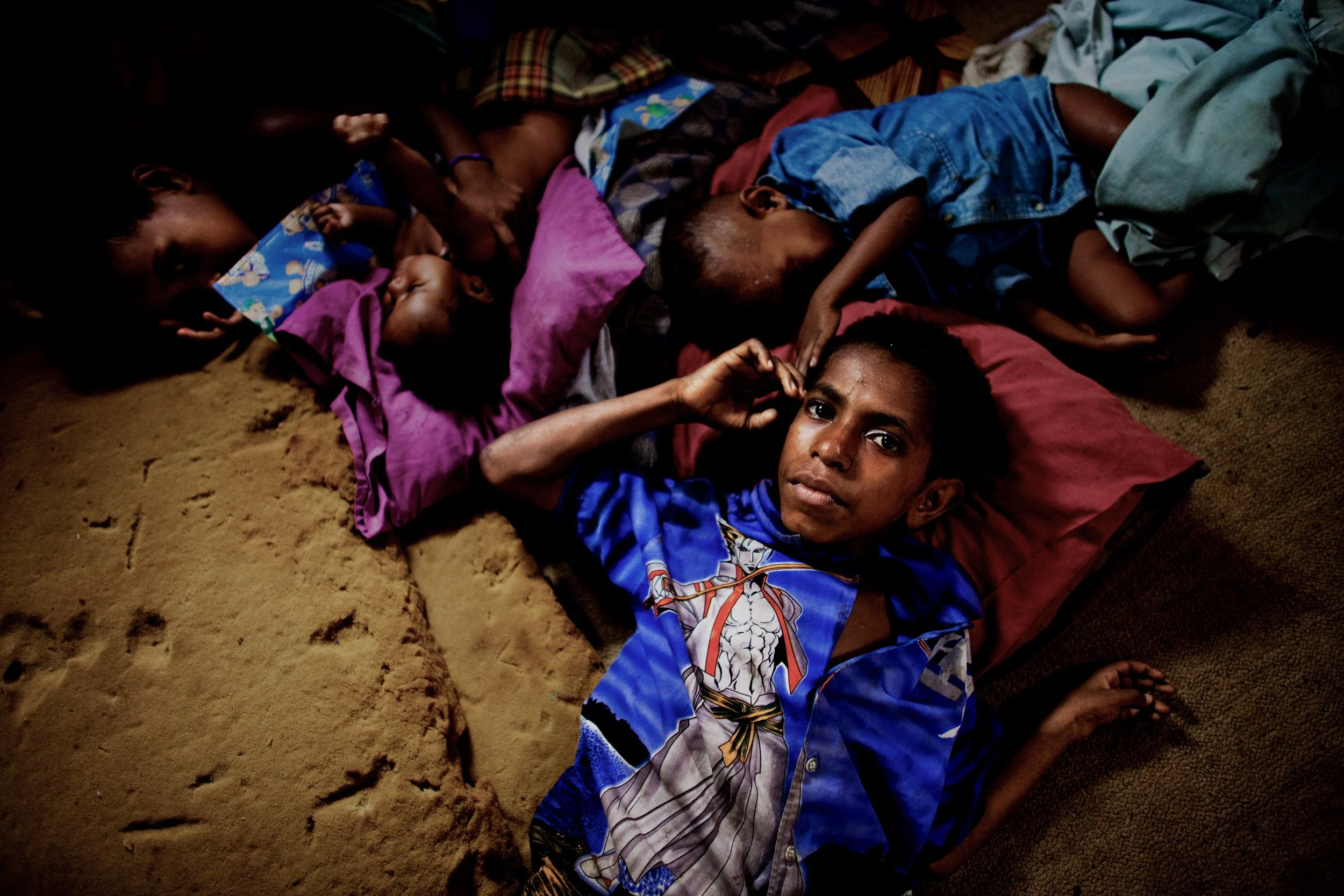

Trans woman prostitution in Little India, Singapore.

Trans woman prostitution in Little India, Singapore.
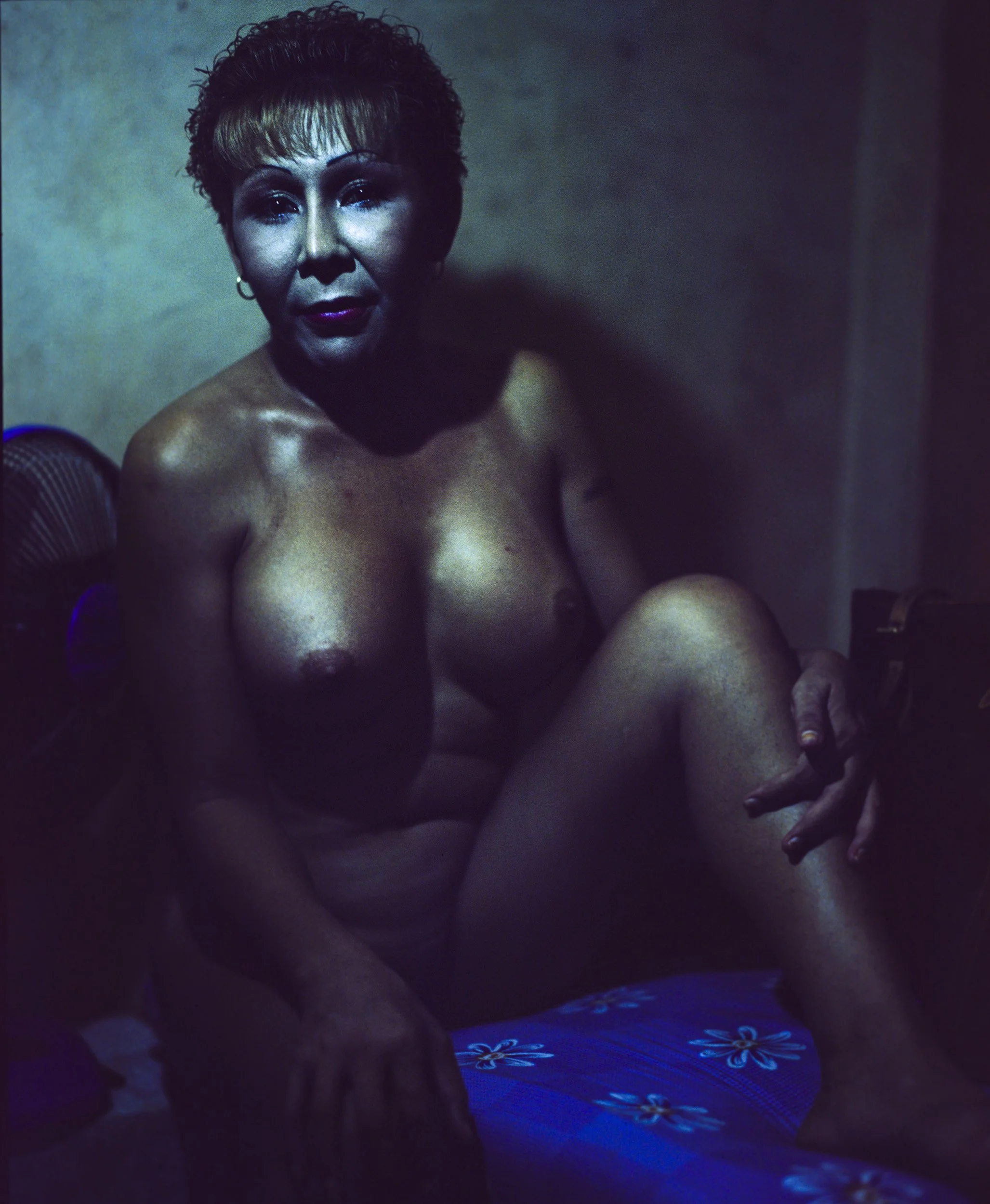
Trans woman prostitution in Little India, Singapore.

Trans woman prostitution in Little India, Singapore.
